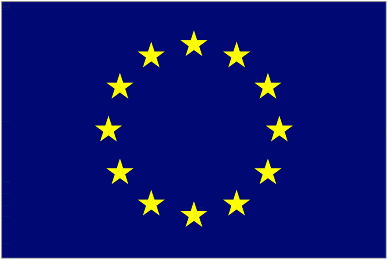It’s been over a month since we published the first part of this post, so I thought it was long past time that we revisit this subject. As a reminder, in part one we covered: London, Berlin, Madrid, Rome, and Paris. So, let’s pick up where we left off with…
The next 5 largest cities in the European Union
Bucharest (Bucureşti)
Well, as with our last article, this one will be starting off with uncertainty. Bucharest, or Bucureşti, doesn’t have a clear cut origin. Some stories link the name to Bucur, a legendary figure said to have founded the city. He was said to be a prince, a soldier, or a farmer, but while there isn’t any evidence to support the existence of this legendary person, the “eşti” suffix may indeed point to the city having been named after a person.
On the other hand, Bucur is thought to be related to bucurie (meaning joy), a Romanian word which may have origins in the Dacian language. Never heard of it? Neither had I. It is an extinct Proto-Indo-European language which developed around 1500 BC (or before) and was thought to have died out by 600 AD.
Vienna (Wien)
This origin of this city name is also up for debate. The name Wien may come from Vedunia, or “forest stream”, which, over time, morphed into wenia, and finally wien. But, this isn’t so easy to say for sure, because the other side of the coin places the origin of the name at the feet of the Celts, who settled the region in 500 BC. The city name may have been Vindobona, meaning “fair village”. The name of one of the city’s districts, Wieden, may stand in evidence of this theory.
Warsaw (Warszawa)
I quite like the legend behind this city’s name, though I must admit a very cursory knowledge of the story, and information isn’t as readily available as for, say, Romulus and Remus. The bit I have gleaned is that the name can be attributed to a fisherman, Wars, and his mermaid wife, Sawa. In fact, mermaids are a bit of a recurring theme in Warsaw. A mermaid has been featured on the city’s coat of arms since the late 1300s, and statues of her, with her sword and shield, can be seen in multiple places across the city.
Another explanation is that in the 12th or 13th century, a nobleman, named Warsz, may have owned a village in what is a modern-day neighbourhood of Warsaw.
Hamburg
Hamburg has a much clearer origin, at least in so far as names are concerned. Derived from Old Saxon, ham referred to a bay or fenced grassland and burg, a castle. So, when the first fortifications were built in this area of the Elbe River, it was known as Hammaburg, or “castle in the bay”.
The town has a very strong and proud heritage with Charlemagne. The story is the original castle, Hammaburg, was built at his behest. However, excavations under the Cathedral Square in 2005/2006 have shown fortifications that date back to the 8th century, before Charlemagne conquered Saxony. So, even when the name is clear, our understanding of history is still evolving!
Budapest
The name Budapest is relatively recent, at least as far as major European metropolises are concerned. In 1873, the cities of Buda and Pest united, hence forming the modern Budapest. But, that just raises more questions, why Buda and why Pest?
The common theory is that conquering Huns in the 5th century named Buda after King Bleda, brother of Attila. However, another theory exists and while it’s not as widely accepted today, it still makes for an interesting linguistic pattern. Before the Huns came to town, the Romans had built a city, which they called Aquincum. As a result, a theory exists that Buda comes from the Slavic word for water (referring to the root of Aquincum), voda.
Pest may come from Pession, a name used to refer to an outpost built to protect Aquincum from attacks, which the Romans called Contra-Aquincum. There is, as seems to be often the case, a second theory. Peştera is a Slavik word denoting a cave.
A small, personal bonus
I am a native Ohioan and all of this research made me ask, “Where did my home State get its name?” So, I looked into it. Ohio comes from the Seneca language, a Native American people and part of the Six Nations (Iroquois League). It has been translated to “good river” or, through a secondary translation via the French, “beautiful river”. Of course, that referred to the Ohio River, which delimits the southern border of the State and opens into the Mississippi. 980 miles long and, at its widest, 1 mile wide, the State and River share a name.
Well, that’s all for us! I hope you learned something, I know I did! And at the very least, I hope we’ve whet your appetite to continue learning about all the ways languages are formed. Stay tuned for more from us and follow our social media to stay up to date.

